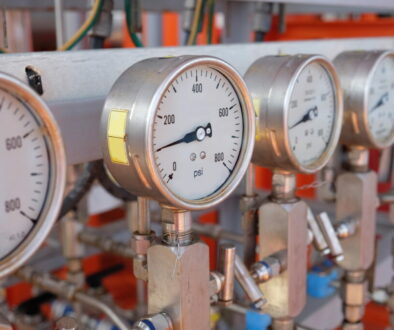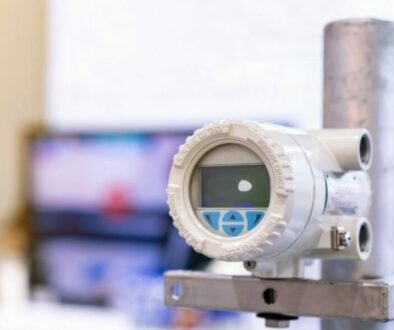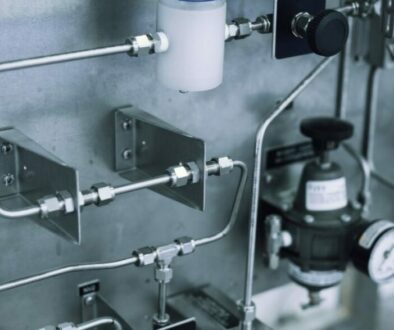Tips for Troubleshooting Hydraulic Proportional Valves
Proportional control valves have been since the 80s and are increasing in their popularity. They are replacing servo valves in lots of applications. This is due in part to the cost of a hydraulic proportional valve being 50% of the cost of a servo valve of the same size. Servo valves continue to be used when precise positioning or speed control is required, like in aircraft and turbine generators. Proportional valves are useful as flow and pressure controls, but the most common use is as a directional valve. While the design of proportional directional valves may vary across manufacturers, they all essentially perform the same function: controlling the direction and speed of a hydraulic cylinder or motor. By using feedback devices like linear-displacement transducers, the position of the actuator can be precisely controlled.
The components of a proportional valve are few; the spool, solenoid, and linear variable differential transformer, or LVDT. In order to operate the valve, a power supply and amplifier are needed. The power supply is usually 24 volts of electricity and it’s used to power the amplifier. The command voltage is input from the programmable logic controller (PLC) and determines the position of the valve spool. The enable is a relay from the PLC that must be made to send a current signal to the proportional valve coil.
Troubleshooting the System
Troubleshooting hydraulic proportional valves is a fairly cut and dry process. When checking a valve where an externally mounted amplifier is used, lights on the front panel will indicate a problem with the system. Then it’s a matter of tracing back to find the issue. When the power supply is on and the enable signal is received, the “on” light will illuminate green. If the light doesn’t turn on, the power supply voltages should be checked at the amplifier connections. If no input voltage is present, the wiring and output signal should be checked from the PLC. If the power supply drops below a minimum number of volts, a red light will come on. This usually means the power supply or wiring is bad or there is a short somewhere. When the power supply is good, 24 volts should be indicated at the amplifier. A yellow light on the bottom of the amplifier face is used to show when the LVDT is bad or when there is a problem with the connecting cables. It will shine when any of these elements fail. The easiest way to find out where the failure is occurring is to remove the LVDT cable from the valve and plug it into a different one. If the yellow light goes out, the LVDT on the old valve has failed and a new valve should be installed immediately. If the light stays on when plugged into the new valve, the problem is with the cable or connections and the continuity of the cable should be checked. If the light is flickering when the machine is operating, this indicates loose connections somewhere.
Located on the amplifier’s front face is the zero adjustment. This adjustment should be made if the cylinder is moving with a zero command signal coming into the amplifier. If the load is moving, the spool is not in the closed position. This is usually caused by the LVDT being out of position. To fix it, rotate the zero adjustment until the linear positioner stops drifting. If speed or positioning problems are occurring, the command and LVDT signals should be checked at the appropriate connections on the amplifier. If these are reading correctly, the problem is most likely in the hydraulic system or the linear positioner.
Valves With Onboard Electronics
A recent trend has been to mount the amplifier on the proportional valve near the digital pressure regulator. This is commonly referred to as onboard electronics. The valve operates in the same manner as with the external amplifier. The most common type of onboard electronic valve uses a seven-pin connector with the power supply input in the “A” and “B” pins on the valve.
The command voltage comes into the amplifier via the “D” and “E” pins. To check these voltages, a multi-tester can be used by inserting the red and black leads into the appropriate connectors on the cable. To verify the power supply, insert the red lead into “A” and the black lead into “B.”
Twenty-four volts should be indicated. A test box can also be used to verify that the valve is operating properly. The cable from the PLC should be plugged into the box, and the cable on the box into the proportional valve. When the system is turned on and operating, the power supply, command, and LVDT voltages will be indicated. If the linear positioner is drifting, the LVDT may not be in the proper position. To null the valve, the LVDT access cover should be removed, and the LVDT centering adjustment should be rotated until the drifting stops.
Oil Cleanliness
Proportional valves have extremely tight tolerances between the spool and housing. These tolerances are typically hundreds of a thousandths of an inch. It’s this tight tolerance that is making this kind of valve more popular. It is essential that the oil entering the valve meet the standard set by the manufacturer. If it doesn’t then the door is open to system failure, catastrophic damage to internal parts and a host of other problems.
The cleanliness of the oil is of huge import also. There can’t be any particulate or gunk in the oil that will affect the flow and coating of it. The cleanliness level of the oil is determined by the International Organization for Standardization (ISO) for the specific valve. The ISO is responsible for setting standards across many industries to ensure that different companies in an industry are using the same best practices and standards when making certain parts. The ISO issues codes for valves so engineers and operators know specifically what they need. For example, the ISO code for a particular valve is 17/15/12. A sample of the oil is taken and measured against this standard. The 17 means that the system has 640 to 1,300 particles that are 4 microns and larger. The 15 means there are between 160 and 320 particles that are 6 microns and larger. The 12 indicates that the sample contains 20 to 40 particles that are 14 microns and larger. The oil needs sampling regularly to ensure the system meets this standard. Failure to meet these standards might mean the filters aren’t being changed often enough, they don’t have the proper micron rating, or additional filters might need adding to the system.
By using these tips for troubleshooting hydraulic proportional valves, you can avoid lost production time as well as the unnecessary expense of sending off good valves for repair. Changing out parts that do not need to be replaced can also introduce contaminants into the system, which can lead to even more serious problems.




